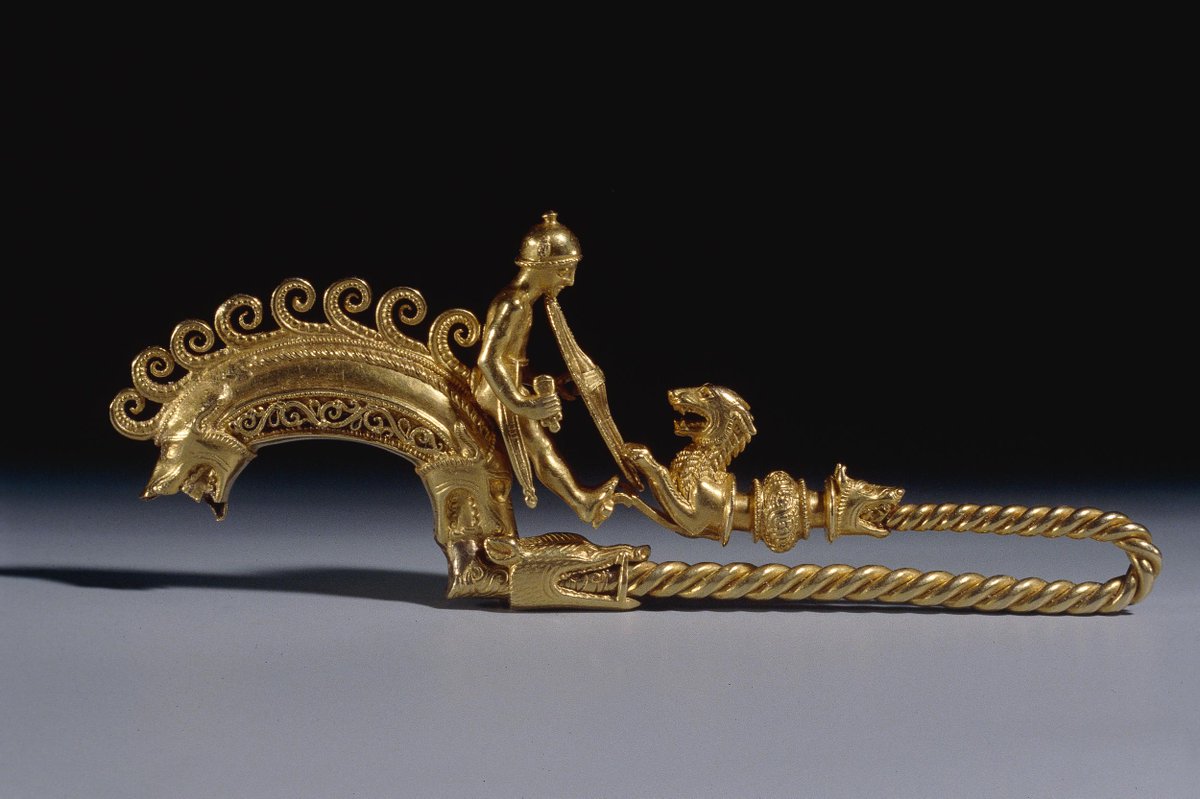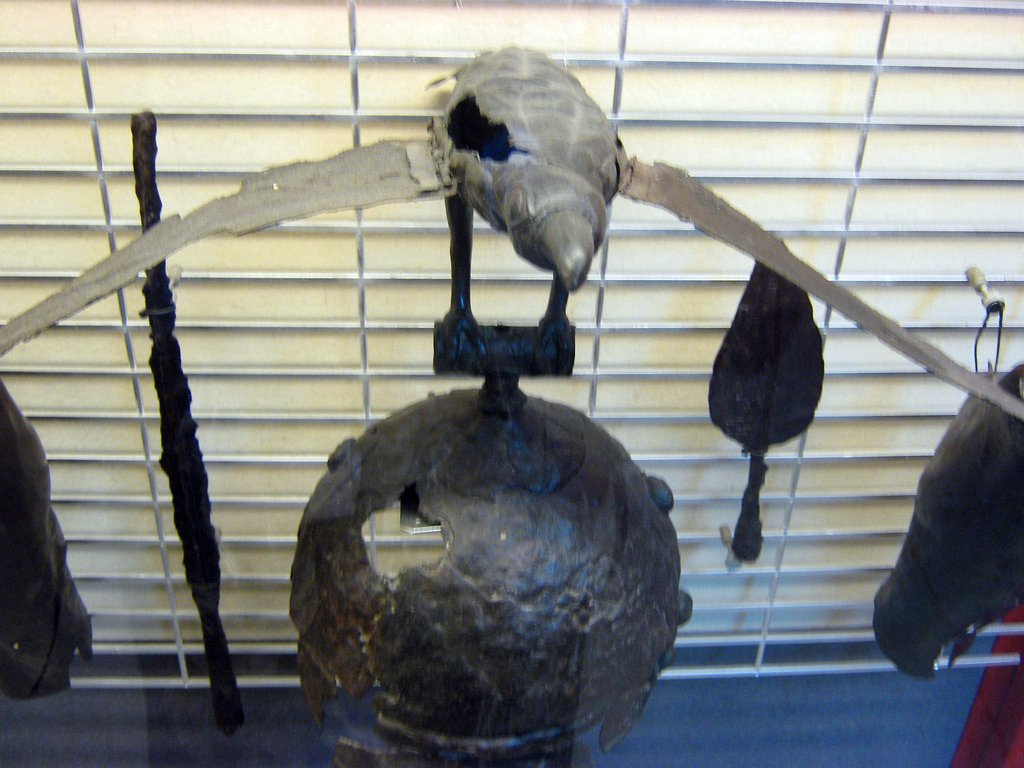
Alright, I think it's time to get more ancient stuff on this twitter, so I'm going to start sharing some of my favorite ancient artifacts.
Let's start with BM 2001,0501.1: The Braganza Brooch: britishmuseum.org/collection/obj… 1/12
Let's start with BM 2001,0501.1: The Braganza Brooch: britishmuseum.org/collection/obj… 1/12

The brooch was part of the collection of the House of Braganza (the kings of Portugal). How it got there, I don't believe we know, but based on the piece itself, it was likely manufactured in the third century BCE. 2/12
It has a warrior on it, equipped in La Tene Material culture (read: Gallic) style. The artist has taken care to render the kit very accurately: the odd Gallic scabbard suspension is recreated correctly (despite not being shared by the Romans or Greeks)... 3/12 

The shield is of the standard La Tene type (but beautifully decorated): it has an oval body (made of wooden planks), with a wooden reinforcing ridge (called a spina) which has a 'barleycorn' (shape not material) boss at the center, secured by an iron 'butterfly' boss. 4/12
We've actually recovered a couple of these shields with the wooden elements more-or-less intact from the site of La Tene and we often find the remains of the iron bosses at sanctuaries (where the shields would have been deposited, probably as war spoils). 5/12
That iron boss (the strip over the center of the shield) would be held in place with rivets at the end, which hook into an iron handle that runs parallel to the boss behind the shield (and is where you hold it). Roman shields in the Republic have much the same construction. 6/12
Back to the brooch, our warrior's sword has broken off, but the hilt looks to be of a Middle La Tene sword.
The helmet is a Montefortino - a type developed by the Gauls and adopted by the Romans. Interestingly, they make them differently! 7/12
The helmet is a Montefortino - a type developed by the Gauls and adopted by the Romans. Interestingly, they make them differently! 7/12
The Roman Montefortino is always bronze/brass, and made as a single piece. The Gallic Montefortino is generally iron and the knob at the top (for afixing decorative feathers or crests) is a separate piece fixed at the top of the helmet. 8/12 

The brooch itself is, as I noted, a bit of a mystery. It survived in a collection, so we don't have any kind of find-spot information.
As a result, there's a fair amount of debate as to who might have made it, and who might have had it made. 9/12
As a result, there's a fair amount of debate as to who might have made it, and who might have had it made. 9/12
The general consensus is that the artisan was probably a Greek, but that the intended owner was probably either Iberian or Gallic. The Greeks don't generally represent Gallic/Iberian war-gear with this level of fidelity - care here was taken to get it exactly right. 10/12
F. Quesada Sanz has argued that the warrior here might be Celt-Iberian; I tend to think Gallic, but it is open to argument. There's certainly Iberian stylistic motifs here, like the dog's heads motifs and the warrior-and-hunting-dog motif. 11/12
All in all, the brooch is an absolutely fascinating example of cultural cross-pollination: an apparently Greek artisan painstakingly recreating the equipment of a Gallic warrior for a wealthy Iberian client (presumably a chieftain of some sort).
Also, it's real pretty! end/12
Also, it's real pretty! end/12
Addendum: I haven't done any justice here to the art-historical import of the brooch, because that's not my specialty.
If you want to read more (from people who know), see A. Persea, ed., La Fibula Braganza/The Braganza Brooch (2011); see if your library can't find a copy.
If you want to read more (from people who know), see A. Persea, ed., La Fibula Braganza/The Braganza Brooch (2011); see if your library can't find a copy.
• • •
Missing some Tweet in this thread? You can try to
force a refresh


